- Home
- Collecting & Sculpting
- What is Porcelain Made Of
What is Porcelain Made Of?
The Secret Recipe Behind “White Gold”
Porcelain is often admired for its delicate beauty, luminous whiteness, and incredible strength, but what is porcelain made of that makes it truly special? It is not just its outwards appearance, it is what lies deep beneath the surface that counts. Unlike ordinary ceramics, porcelain is the result of a precisely balanced recipe that transforms humble minerals into one of the world’s most coveted materials.
If you’ve ever wondered what gives porcelain its light feel, glass like translucence, and centuries long durability, the answer lies in its unique composition. I will break down the secret ingredients and uncover why this recipe stood as a closely guarded secret for over a thousand years until the mighty Meissen cracked the code..
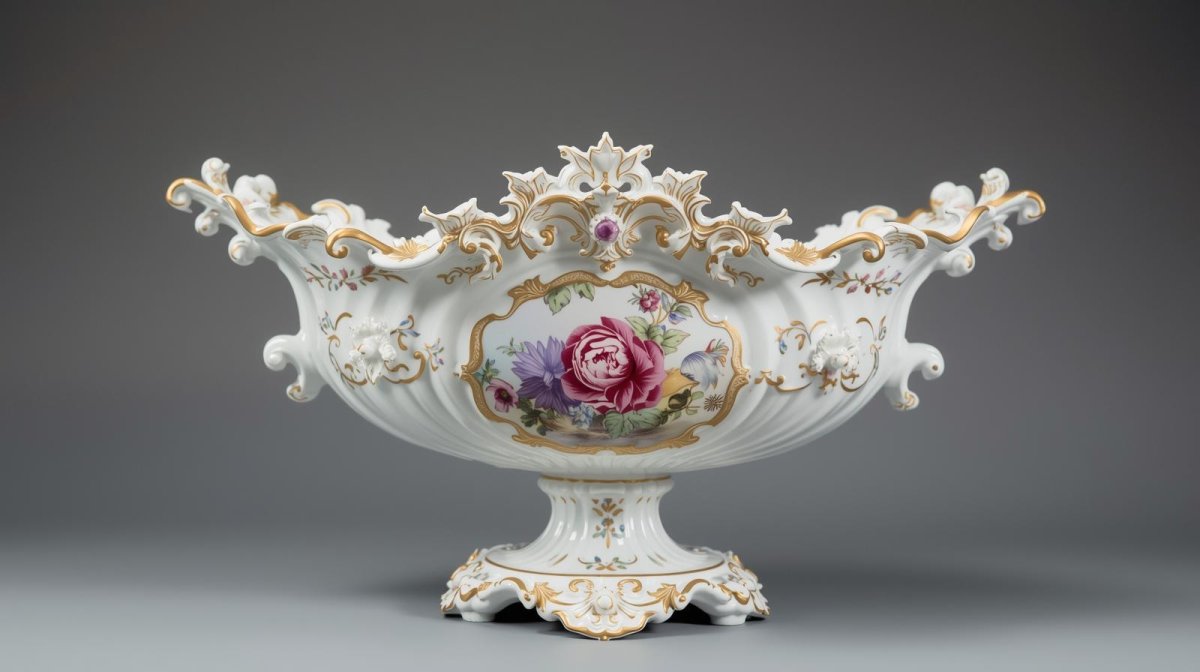
The Three Core Ingredients of Porcelain
While variations exist across cultures and history, authentic porcelain is built on three essential ingredients, each playing a distinct role in achieving porcelain’s legendary properties:
1. Kaolin (The Backbone)
What it is: Kaolin, also called China clay, is a fine, pure white clay mineral.
Role in porcelain: It provides the signature whiteness, workability (plasticity), and structural body of porcelain.
Why it matters: Without kaolin, porcelain loses its defining purity and doesn’t achieve its characteristic translucence.
Did you know? The very name “China clay” originates from porcelain’s birthplace, where deposits of kaolin near Jingdezhen were exploited by Chinese artisans. Access to kaolin was so important that European courts spent decades trying, and failing, to replicate the recipe until their own deposits were discovered.
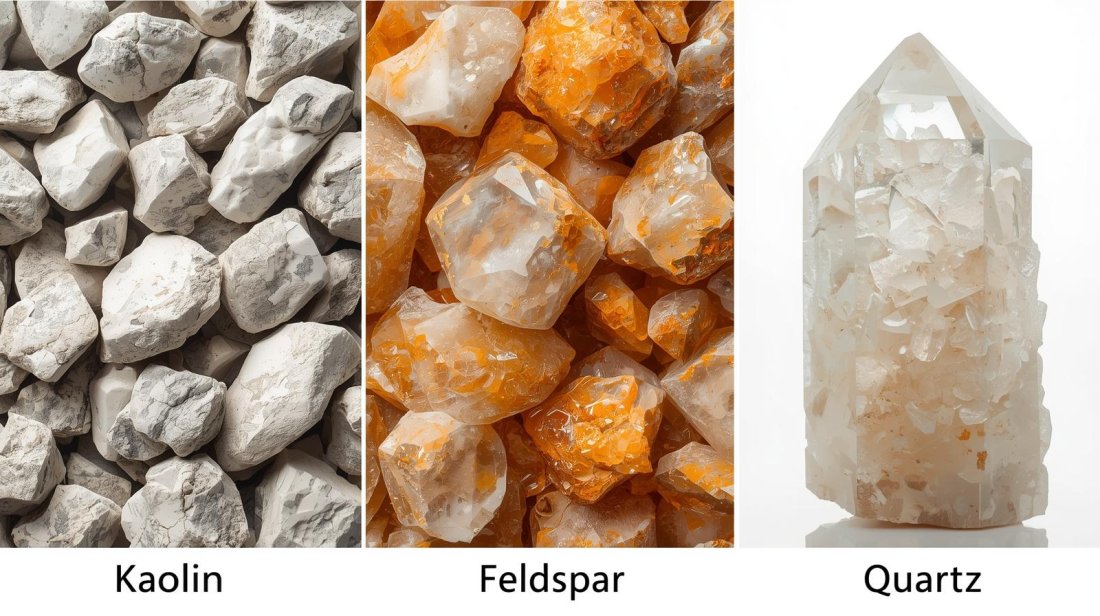
2. Feldspar (The Melting Agent)
What it is: Feldspar is a group of rock-forming minerals, abundant in the Earth’s crust.
Role in porcelain: In firing, feldspar acts as a flux — it melts at high temperatures and fuses kaolin and quartz into a vitrified (glassy, non-porous) body.
Why it matters: Feldspar is the reason porcelain has a completely sealed surface, doesn’t absorb water, resists staining, and achieves that smooth, almost silky texture.
3. Quartz (The Strength)
What it is: Quartz, or silica, is a crystalline mineral.
Role in porcelain: It strengthens the body, preventing it from collapsing or deforming during firing. Quartz also adds to the hardness and contributes to that famous “ringing sound” porcelain makes when lightly tapped.
Why it matters: Without enough quartz, porcelain would warp or crack under the intense heat of the kiln.
The Perfect Balance: Why the Recipe Matters
In practice, porcelain is not just about ingredients, but ratios and firing temperatures. A classic hard-paste porcelain recipe might use:
- 50% kaolin
- 25% feldspar
- 25% quartz
When fired between 1,200–1,450°C, the results are extraordinary: porcelain transforms into a vitrified substance that is:
- Non-porous (liquids and odours cannot penetrate)
- Translucent (allowing light to pass through thin sections)
- Extremely durable (stronger than stoneware, despite being lighter)
- Resonant (producing a distinct clear chime when tapped)
This is why porcelain cups and plates don’t stain easily, why they feel lighter in hand, and why collectors across centuries have described it as magical - and said to themselves in wonder:- "What is porcelain made of".
Hard-Paste, Soft-Paste, and Bone China: Ingredient Variations
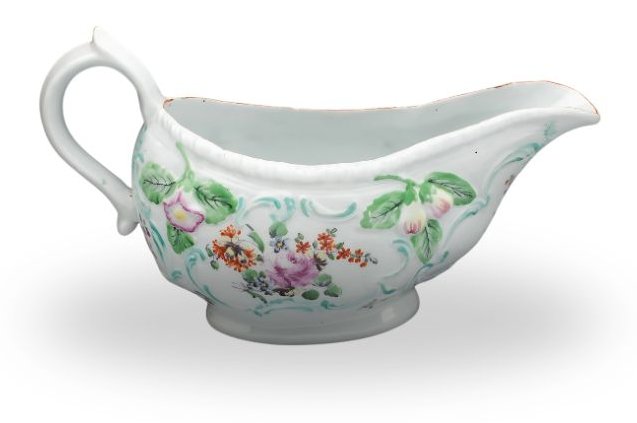 Early English Derby Soft-Paste Porcelain Sauce Boat c.1765
Early English Derby Soft-Paste Porcelain Sauce Boat c.1765Not all porcelain is identical. The basic recipe gives rise to different variations, each with its own unique ingredients and qualities:
Hard-Paste Porcelain (Traditional Chinese)
- Recipe: Kaolin + feldspathic rock (petuntse).
- Fired at the highest temperatures.
- Known for extraordinary hardness and glass-like finish.
Soft-Paste Porcelain (European Experiment)
- Recipe: Kaolin substitutes mixed with glassy additives, soapstone, or gypsum.
- Lower firing temperatures.
- Softer, creamier appearance but less durable.
Bone China (British Innovation)
- Recipe: About 50% bone ash + kaolin + feldspar.
- Creamy ivory colour, high translucence, superior chip resistance.
- Perfected in England in the 18th century and still beloved for luxury tableware today.
Understanding these distinctions solves a key beginner’s pain point: why some porcelain looks whiter, glossier, or warmer than others. It all comes back to the ingredients.
What is Porcelain Made of to Look and Feel So Different from Other Ceramics?

If you’ve ever wondered why porcelain feels finer than earthenware or stoneware, the difference is in both ingredients and temperatures:
- Earthenware: Fired at lower temperatures (~1,000°C), porous, and requires heavy glazing. Ingredients are less pure.
- Stoneware: Higher-fired (~1,200°C), stronger than earthenware, but still denser and heavier than porcelain.
- Porcelain: Ultra-pure ingredients, extreme firing temperatures, fully vitrified. Light, resonant, and far more refined.
This comparative view helps beginners connect the dots: porcelain isn’t just “posher clay” — it’s a different recipe entirely.
Modern Innovations: Beyond Tableware
While traditional recipes remain largely unchanged, modern science has expanded porcelain into high-tech applications thanks to its exceptional strength and chemical stability:
- Dentistry: Dental crowns and veneers rely on porcelain for its resemblance to natural enamel.
- Electrical Insulators: Because it doesn’t conduct electricity, porcelain is vital in high-voltage applications.
- Medical & Military: Advanced porcelain composites are even explored for biomedical implants and lightweight armour.
- Tiles & Architecture: Ultra-thin porcelain slabs are now engineered for skyscraper facades and flooring.
This demonstrates the incredible versatility of porcelain’s fundamental recipe — from the elegance of a Ming vase to the micro-precision of a medical implant.
Key Takeaway: The “Magic” Is in the Mix
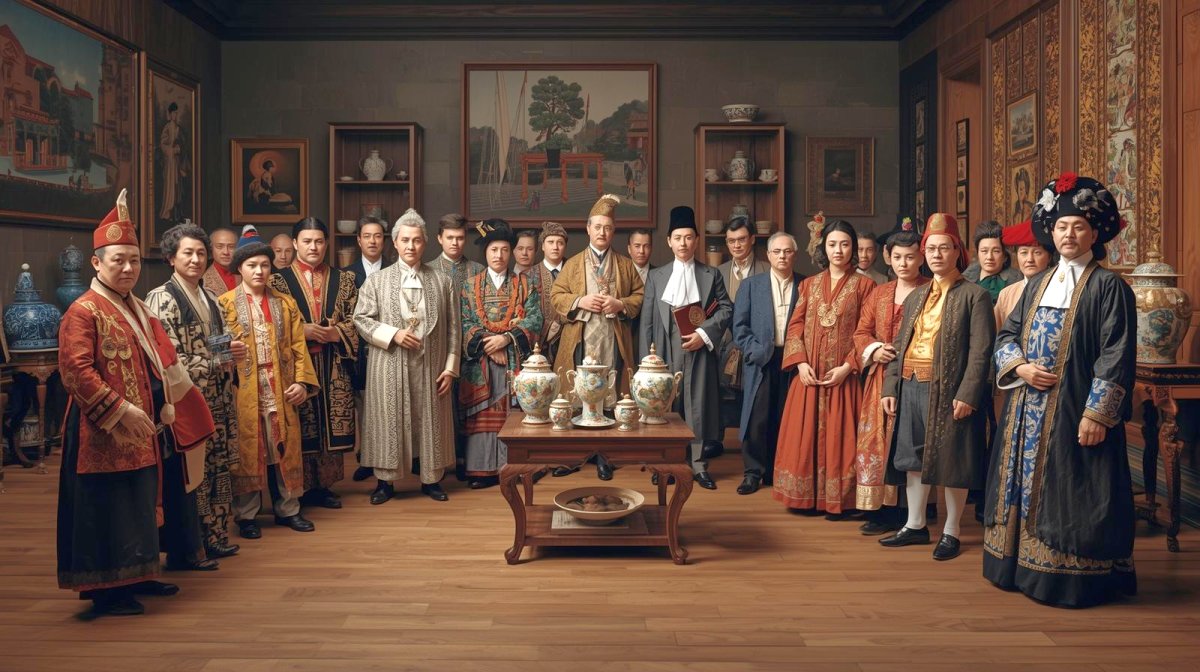 Porcelain - a material that has fascinated emperors, artisans, scientists, and collectors alike
Porcelain - a material that has fascinated emperors, artisans, scientists, and collectors alikePorcelain may look delicate, but its beauty comes from a perfect storm of ingredients and craftsmanship.
- Kaolin gives it purity and body.
- Feldspar transforms it into a sealed, glassy whole.
- Quartz lends strength and resonance.
Fire these together with precision, and you get a material that has fascinated emperors, artisans, scientists, and collectors alike.
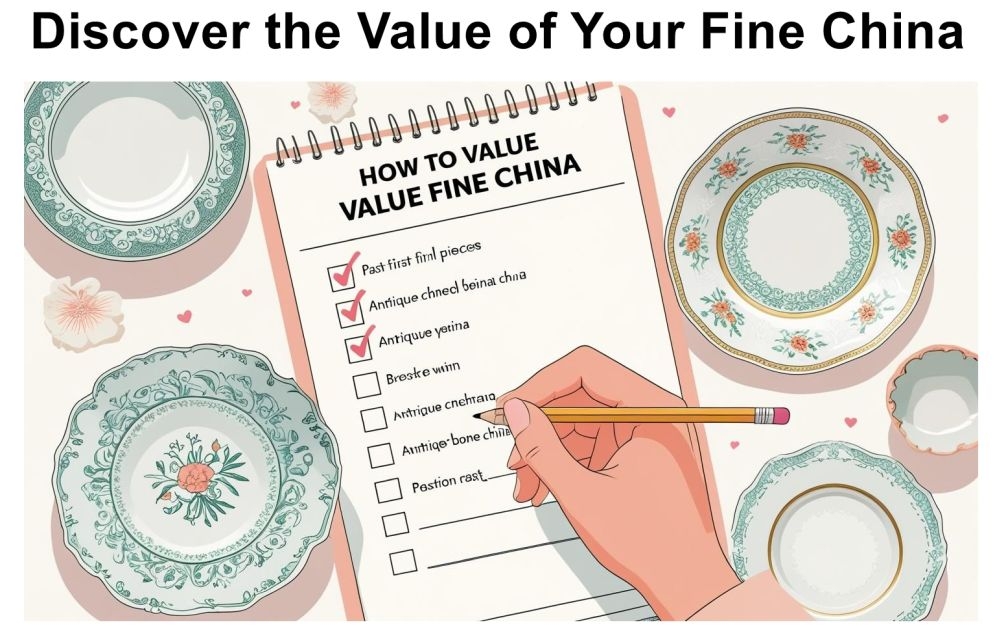
Inherited a china set?... Download my free 7-point checklist to instantly assess its potential value.
From the Studio
• Peter Holland Posters
• Sculpture Studio










